As we flew south from the Tanzanian town of Bukoba on the western shores of Lake Victoria, the somewhat mystical island of Rubondo appeared on the horizon, an island of rolling hills, bays and headlands, carpeted with pristine equatorial forest. It was these virgin forests, along with the remote island location that led to the Frankfurt Zoological Society choosing it as the destination for a significant chimpanzee rehabilitation project that began in 1966. From an original 16 chimps, thought to have been of West African origin and rescued from zoos and circuses across Europe, there are now more than 60 individuals, living totally naturally and wild on the island. Though seeing the chimps was perhaps the main focus of my visit to Rubondo, I was very interested to see what else the island had to offer, and I was not disappointed. In truth it was really quite amazing!
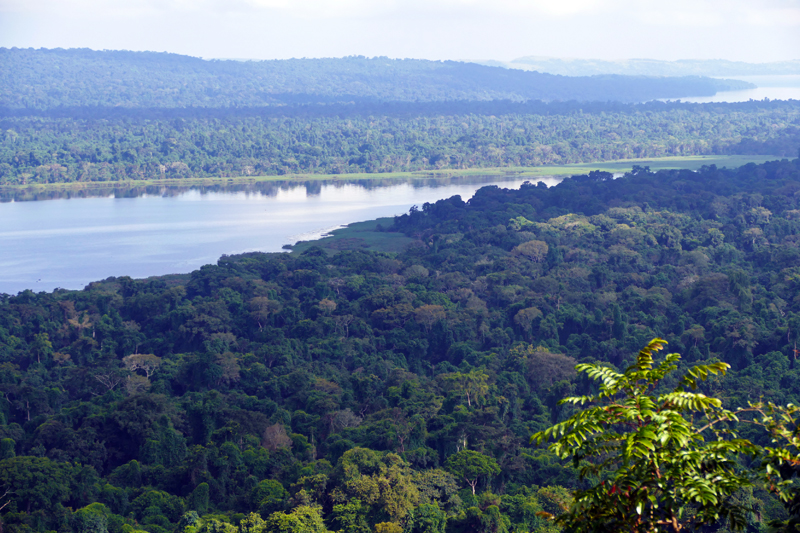
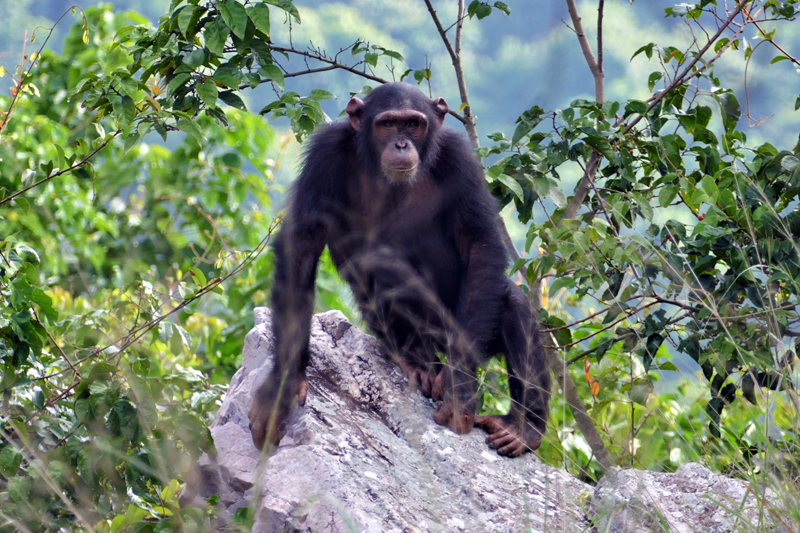
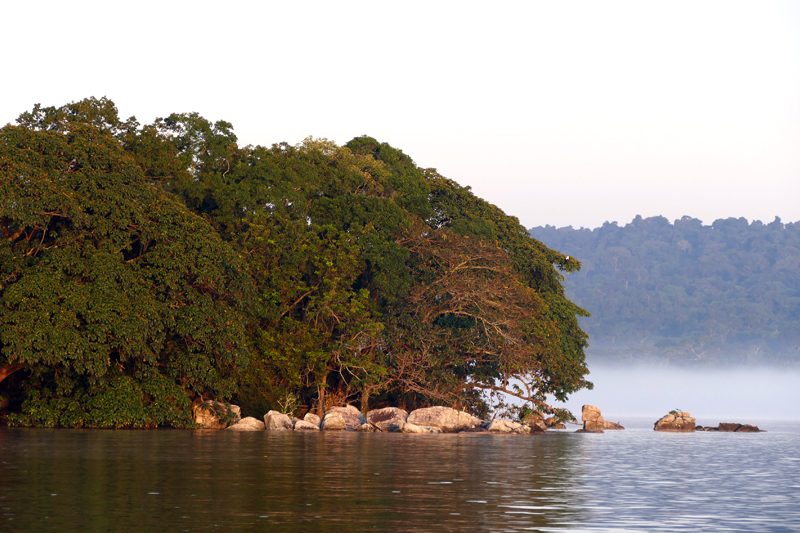
Having landed on a grass airstrip on the eastern edge of the island, surrounded by African wild palms, swampy grassland and majestic forest, we bumped our way through the forest to the nearby Rubondo Island Camp. On arrival into camp, I was utterly struck by the idyllic scene on the lakeshore. The camp is built on a small bay with forested headlands and a beautiful, cosy beach. Yellow-billed kites circled above and swooped in to sun themselves on the beach, pied kingfishers chattered and darted, long tailed cormorants flew low across the bay and egrets fished in the shallows. The surrounding forest was impressive to look at, but I soon realised it was full of activity. Vervet monkeys were feeding, and I enjoyed watching three African Grey parrots going about their business. Then I heard the tell-tale forest sign of swooshing wings as some Black and White Casqued hornbills arrived to feed on a large fig tree. They were soon joined by a pair of Trumpeter hornbills, their call echoing through the canopy. Movement at ground level caught my eye as a bushbuck appeared from the forest, nervous at first but then gaining confidence and grazing quietly in the open. It was simply magical and for the first hour or two I simply didn’t know where to look next.
Later that afternoon I was taken for a boat cruise to visit a small island within the National Park that they call ‘Bird Island’ which is home to colonies of long-tailed and white-breasted cormorants, as well as a variety of other species including black crake, African darter, little egret and pied kingfisher. We also saw spotted-necked otters fishing their way around the island. On the way we tried some of our own fishing for Nile Perch, and somewhat typical of this enigmatic destination, I was fortunate to land a 20kgs specimen within 20 minutes of letting out the lure! Minimum effort, maximum reward, sunshine and a stunning backdrop – that is my idea of the perfect fishing outing! As the sun was dropping we followed the contours of the main island watching birds flit and dive. The forest was beautiful and felt untouched, we passed small hippo pods and watched crocodiles slide silently into the lake. However most satisfying of all was to see black and white colobus feeding through the dense canopy.
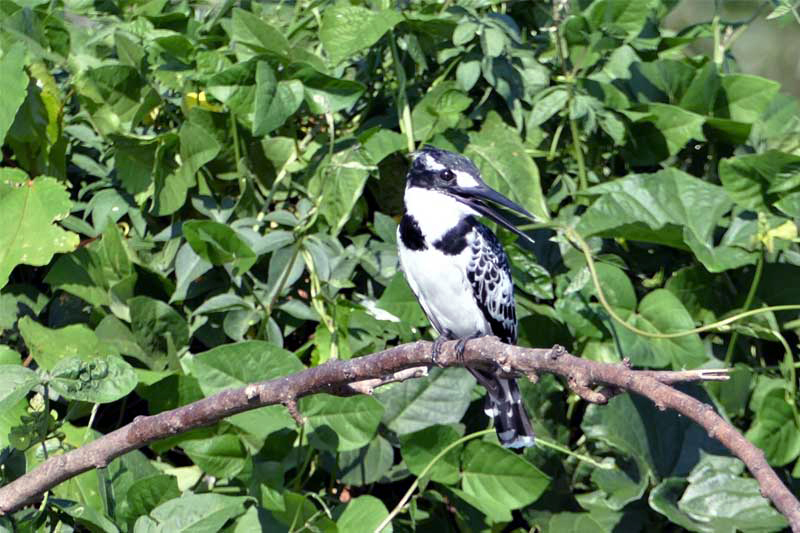
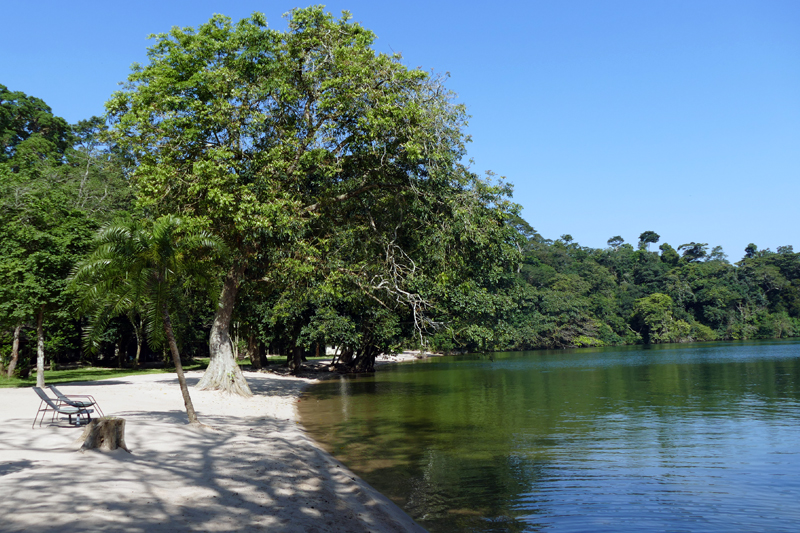
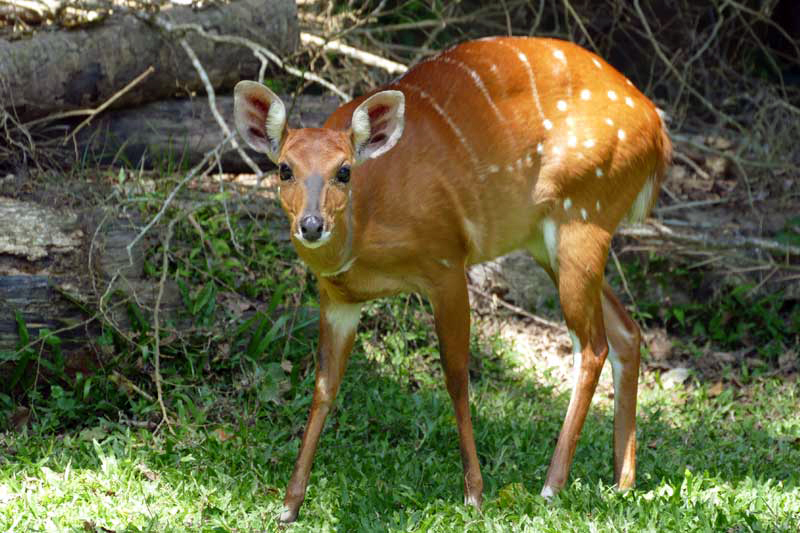
On safari, the night time is often exciting, with nocturnal species prowling and foraging, and the sounds of Africa all around you. Rubondo was no different, despite the obvious lack of predators. At one-thirty in the morning I awoke to a huge ‘crack’ which could only mean one thing – elephants! It was almost full moon and the front of my tented chalet was mosquito gauze, so with great pleasure I was able to watch a pair of elephants feeding a few metres away. I was about to pop my head back down again when I saw the silhouette of a small mammal make its way across my verandah, perfectly outlined in the moonlight. As I quickly shone my torch I was greeted by the cute face of a genet before it darted away. That was definitely an unexpected bonus!
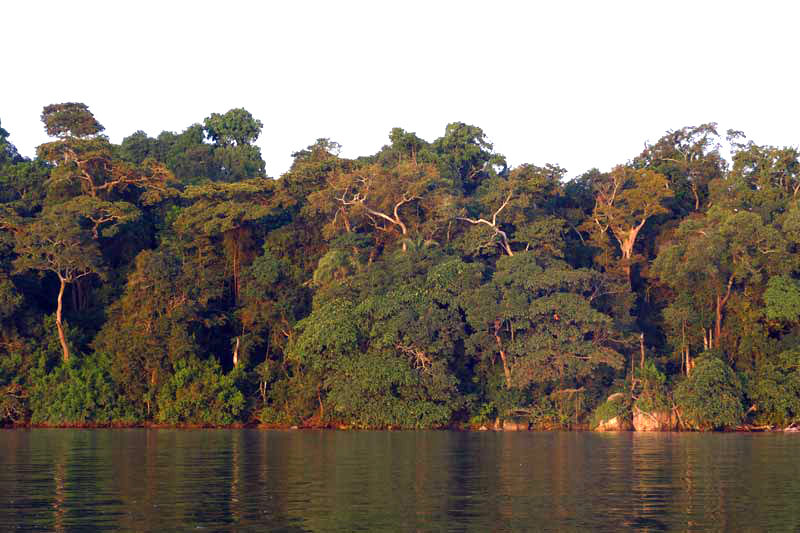
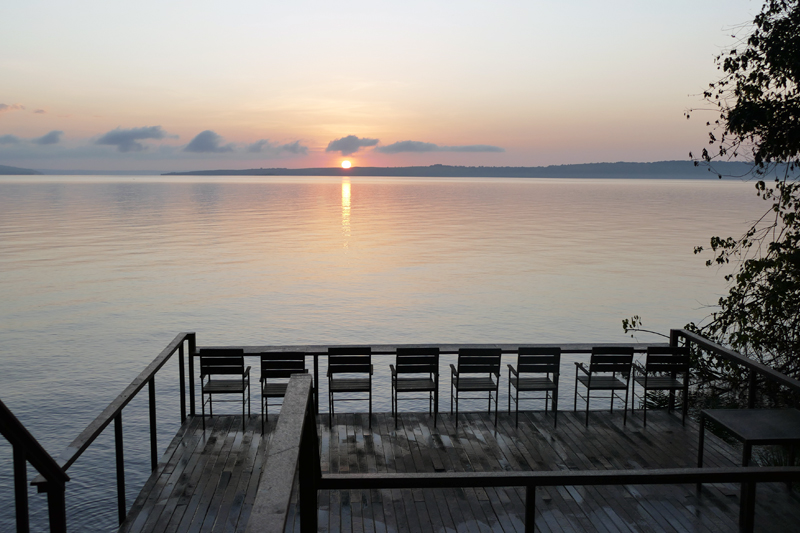
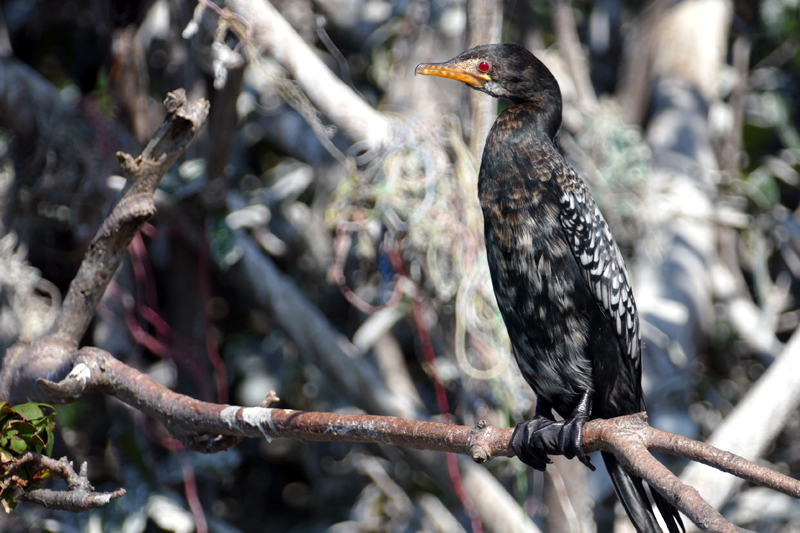
The next morning started with breakfast on the sunrise deck, where in addition to cormorants winging their way across the placid water in front of the gently rising sun, I was joined by vervet monkeys and spotted-necked otters! However, the main event was chimpanzee tracking and after picking up an armed ranger (to protect us from elephants should we stumble across them) I headed north with my guide Isaac on the island’s only access track. Isaac explained several times that we might need to walk a long way (do I look that bad these days?) but in the end we had a trek of about 1.5 kms to catch up with trackers who had set out earlier and who visit the chimps on a daily basis. The forest was dense and full of sounds, from trumpeter hornbills to trumpeting elephants (thankfully not close) but the real excitement began as we entered a clearing to meet the trackers, only to be greeted by a cacophony of chimp calling. Incredible! Isaac explained that the group had split and one of the factions was now calling to the other to advise they had found some good fruits. The calling seemed to change pitch as we crept forward towards one group to try and catch a glimpse, and I realised that it was probably my presence which was causing the chimps to be unsettled. Isaac told me how the trackers are fully accepted, but that tourists can still sometimes unnerve the chimps at first. This does mean it is sometimes hard to get very close, but I did feel that I was contributing to the conservation effort, by helping with the habituation process. Despite this, before long I had viewed several chimps, including some more senior members of the group and one youngster swinging from a tree. A little patience was rewarded when a reasonably relaxed chimp came out into the open and fed on a rock in full view – this turned out to be the best photo opportunity and a magical few moments that rivalled other chimp experiences I have had. As the chimps reunited we followed them as they fed through dense undergrowth, but it was hard to keep up. I also felt that the chimps knew exactly how to keep us at a comfortable distance. We saw them through the foliage many times, but could never catch up! Eventually the forest went quiet and we lost them, but it had been an exhilarating morning and a very authentic chimp experience.
Later that day, Isaac took me out on an evening game drive to see some of Rubondo’s other game. Sitatunga and bush pig were top of my list, though being nocturnal a bush pig was perhaps optimistic. We enjoyed some lovely female and male sitatunga sightings in the warm evening light (best place in Africa to see these rare aquatic antelopes – I think so!) before we stopped for sunset drinks overlooking a bay on the west of the island. Above us a large flock of Abdim’s storks settled down to roost, only to erupt in flight when an elephant trumpeted in the forest, whilst hippo grunted further down the bay. Not so different from safari Africa after all!
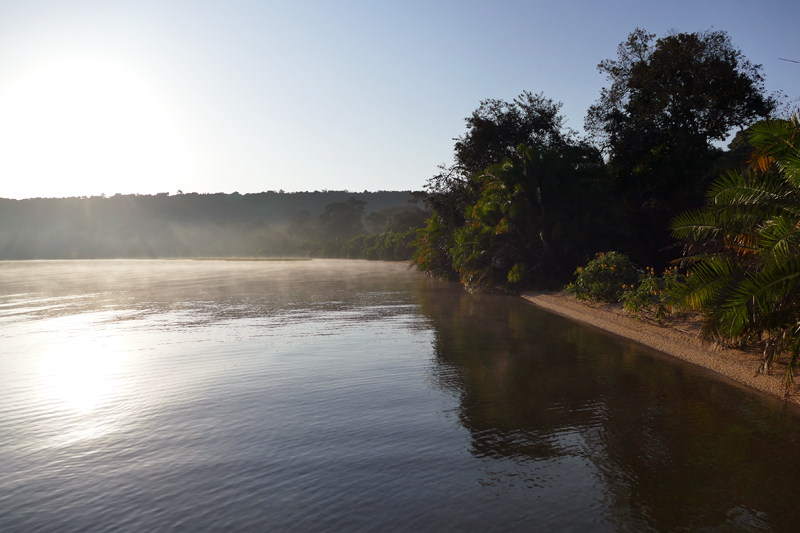
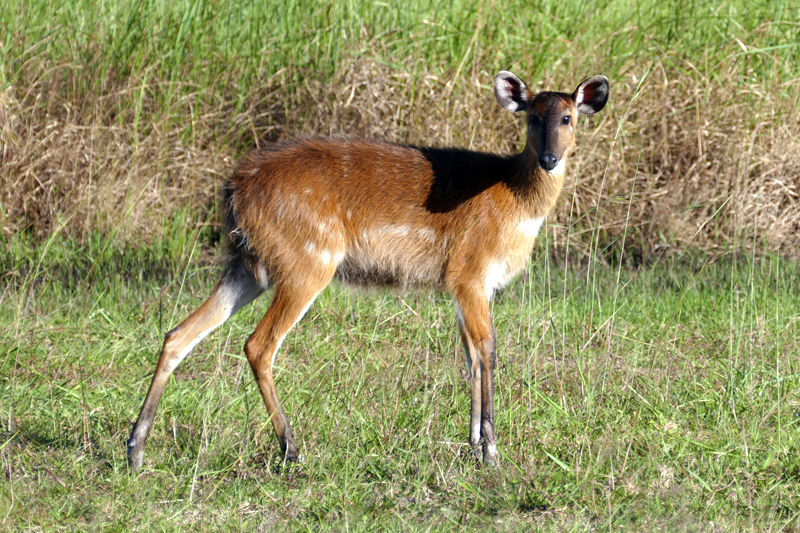
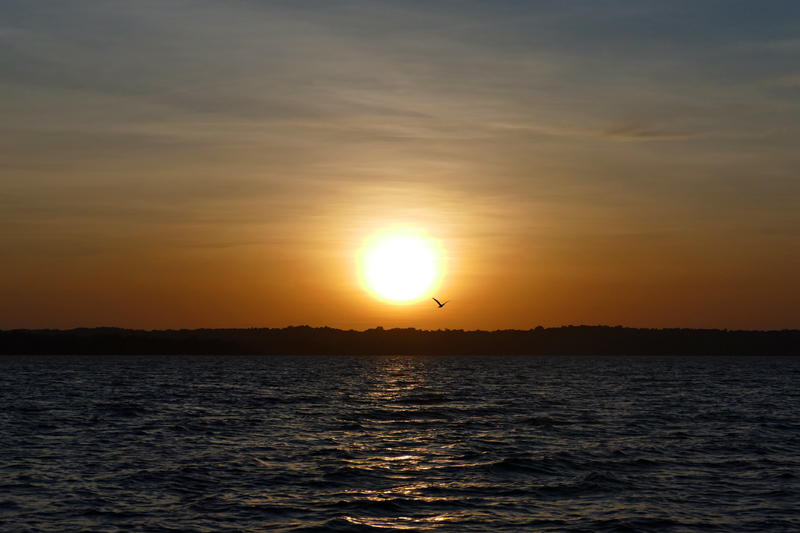
My final morning, once I had watched another beautiful sunrise and met the younger members of the otter family who seemed to literally swim up to the deck to see who was there, included a boat cruise northwards up the east coast to a bay that is used for overnight fly camps, and where Asilia Africa (who run Rubondo Island Camp) plan to build a luxury tree lodge. Mist shrouded the forest a little and the lake was perfectly flat, whilst the morning light was simply stunning. Birds were constantly in view, flying across our path or circling over the forest. I really didn’t want to leave. But to the airstrip I had to go, where I stood with Isaac chatting and waiting for the aircraft as Eastern grey plantain eaters announced themselves noisily above us. And then, as if the island had one last gift for me, a rather rotund but proud bush pig trotted straight across the airstrip in front of us. This was the first I have seen since one allegedly bolted into the undergrowth from the roadside in Nairobi National Park nearly 30 years ago.
Rubondo Island certainly has a magic to it, and whilst it is the chimp experience that will naturally draw most visitors, there are plenty of other attractions for wildlife enthusiasts or anyone who simply wishes to immerse themselves in a beautiful and exclusive natural environment.
Rubondo can be reached by scheduled aircraft from northern Tanzania (Serengeti National Park and Ngorongoro Highlands) and from Kigali, Rwanda. Rubondo Island Camp offers very comfortable accommodation in tented chalets for a maximum of 16 guests, and offers the only tourist accommodation on the island.
